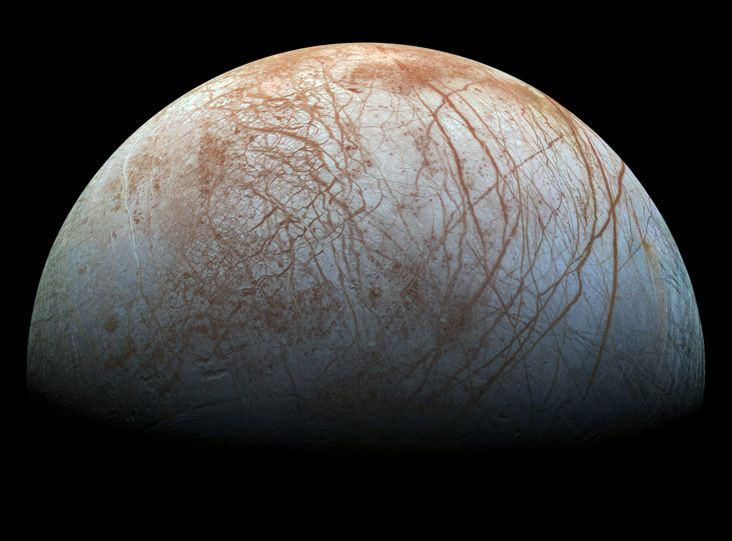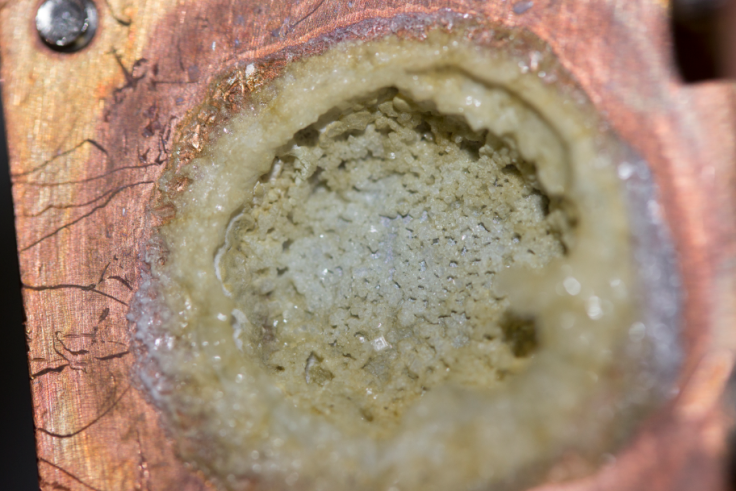'Europa In A Can' Experiment Suggests Moon's Surface May Be Covered With Irradiated Sea Salt

Jupiter’s moon Europa is believed to harbor a massive ocean beneath its striated icy crust, making it a prime target for scientists looking for signs of extraterrestrial life. Now, a NASA experiment has bolstered the hypothesis that the moon might indeed have a salty, subsurface ocean.
For decades, scientists have struggled to explain the process that might have given the moon its distinctive striated appearance. The experiment suggests these streaks might be the result of salt from the ocean seeping up to the surface and darkening when exposed to radiation created by Jupiter's powerful magnetic field.
“If it's just salt from the ocean below, that would be a simple and elegant solution for what the dark, mysterious material is,” lead researcher Kevin Hand, a planetary scientist at NASA's Jet Propulsion Laboratory in Pasadena, California, said, in a statement.
In order to identify the composition of these dark streaks, first observed by the Galileo spacecraft in the 1990s, Hand and his colleague Robert Carlson -- a co-author of a paper accepted for publication in the Geophysical Research Letters -- created a simulated patch of Europa's surface in a laboratory test apparatus, which they called “Europa in a can.” Using this lab setup, which not only mimicked Europa’s surface temperature but also simulated the pressure on the moon’s surface, the researchers irradiated salt, as well as mixtures of salt and water, in a vacuum chamber using an electron beam.
After a few hours of exposure to this harsh environment, they found that the salt samples, which were initially white, had turned a yellowish-brown color that was “a compelling match to spacecraft data for Europa's mystery material.”

Europa is just one of several bodies in our solar system, including the Jovian moons Callisto and Ganymede, and Saturn’s moon Enceladus, that are now believed to have liquid water -- indispensable for the origin and evolution of life as we know it.
While the experiment could not assess how salty this subsurface ocean is, “research like this is important because it focuses on questions we can definitively answer, like whether or not Europa is inhabitable,” Curt Niebur, Outer Planets Program scientist at NASA headquarters in Washington, said, in the statement.
“Once we have those answers, we can tackle the bigger question about life in the ocean beneath Europa’s ice shell,” Niebur added.
© Copyright IBTimes 2024. All rights reserved.






















